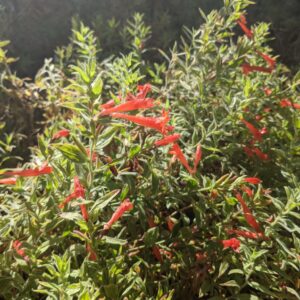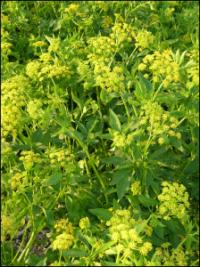Plants for Butterflies and Other Pollinators
Showing 209–211 of 211 results
-
Xerophyllum tenax Turkey beard, Indian basket grass Z 5-8
Plume of fragrant white flowers May-August on naked stalks rising from mound of grassy foliage, actually a lily.
OUT OF STOCK
Plume of fragrant white flowers May-August on naked stalks rising from mound of grassy foliage, actually a lily.
Size: 3-5’ x 24-30”
Care: sun to part shade in well-drained soil
Native: British Columbia, to Montana & WYSeveral western Indian tribes wove baskets & hats from the leaves & roasted the roots for food. Blackfoot applied the plant to wounds to stop bleeding and repair breaks & sprains. Collected by Meriwether Lewis June 15, 1806 just east of Weippe Prairie and west of Bitterroot Mountains in Idaho.
-
Zauschneria garetii syn Epilobium canum ssp. garrettii Hummingbird trumpet, California fuchsia, Garrett’s Firechalice Z 5-9
Vibrant orange-red tubes in late summer, spreading by root, form a colorful groundcover.
Vibrant orange-red tubes in late summer, spreading by root, form a colorful groundcover.
Size: 12” x 18-24”
Care: sun to part shade in well-drained soil
Native: Kingston Mountains in CA, Utah, Idaho & Wyoming
Wildlife Value: Attracts hummingbirds, birds and butterflies, Deer and rabbit resistantCollected in Utah’s Big Cottonweed Canyon in 1906 by A.O. Garrett (1870-1948), prolific Utah planthunter.
-
Zizia aurea Golden alexanders Z 4-9
In spring, golden umbels
Tiny chartreuse-golden flowers, grouped in umbels, spring. Good cut flower.
Size: 30"x 24"
Care: full sun in moist to moist well-drained soil
Native: from New Brunswick south to Florida - west to Texas, Wisconsin native
Wildlife Value: Primary host for the Missouri Woodland and Black swallowtail butterfly caterpillars. Supports over 70 bee species.Meskwaki used the root to reduce fevers and the flower stalks to ease headaches. Collected by late 1700’s. Good cut flower.



